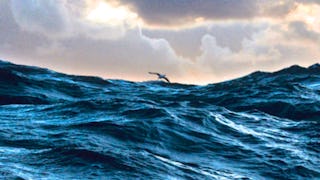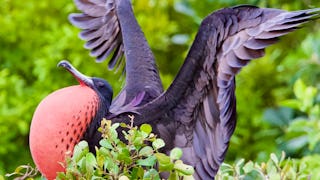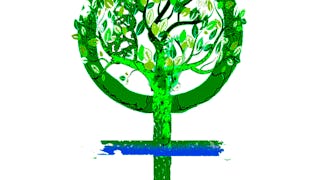This course is about life in the oceans, from the sunlit surface to the inky depths, from microscopic phytoplankton to the great blue whale. The ocean is among the world’s most inhospitable environments for scientific research, which is why we know as much about the surface of the moon as we do the bottom of the sea. This course uncovers the evolutionary history of marine organisms, adaptations to life in water, the behavior and functional morphology of sea animals, interactions between species, and current threats. Throughout the course, we meet scientists who are developing ingenious solutions for overcoming challenges and are making remarkable discoveries. By evaluating these cases and analyzing real scientific data, we come to understand some of the ways that life has adapted to diverse ocean habitats, how it interacts with the physical environment and with other organisms, and why it matters to us.

Enjoy unlimited growth with a year of Coursera Plus for $199 (regularly $399). Save now.

(586 reviews)
Skills you'll gain
Details to know

Add to your LinkedIn profile
5 assignments
See how employees at top companies are mastering in-demand skills

There are 5 modules in this course
Did life on Earth begin in the ocean? How diverse are marine organisms, compared to those on land? What are the forces that shaped their evolution, and what threats do they face? We begin our course by investigating questions whose answers are far less straightforward than you might think. Here we will meet our course authors and look through a porthole onto their scientific research. We will learn how destructive fishing techniques are affecting the ecosystems of squid species and how biofluorescence and bioluminescence help mysterious deep-sea creatures survive and reproduce.
What's included
4 videos3 readings1 assignment
Just as life on land depends on the air we breathe, life in the ocean depends on water. What are the properties of seawater, and how are they important to life? This week we will examine seawater’s chemical and physical characteristics—things like temperature, salinity, acidity, pressure, and the transmission of sunlight—that profoundly affect the organisms living in it. We’ll study how water moves through the ocean and beyond, in a great global cycle that includes internal motion like tides and currents, but also processes like evaporation, precipitation, and wind, which take place outside the ocean. Then we will look at how organisms take advantage of all this motion. How do the water’s properties allow marine life to find food, escape from predators, meet mates, and spread their offspring? Finally, we will a visit with a bioengineer who designs her own equipment to create pulsing images of a previously little-studied organism, a gelatinous filter-feeder that’s enormously important in its ecosystem.
What's included
2 videos4 readings1 assignment
This week we will examine another aspect of motion underwater: how matter and energy move through marine ecosystems, from the photosynthetic organisms that capture sunlight at the base of the food pyramid to the huge predators at the top, as well as the organisms that cycle waste and dead creatures back into the system. What lives where, and why? How do the movement of matter and energy affect the patterns of life in the ocean?We will take a closer look at principles of ecology and how they apply in marine environments. How do species interact within a community? How do they help and harm one another, and how do their interactions drive their evolution? In a case study, we will visit a marine scientist who studies dolphins that herd their prey and find out about the daily migrations those prey species make between deep and shallow waters.
What's included
3 videos3 readings1 assignment
Blue whales are the largest animals that ever lived and have among the longest migrations of any mammalian species. Their massive body size and range bring with them a unique set of challenges. How do blue whales get enough energy feasting on just tiny krill? A group of scientists, including biologist Jeremy Goldbogen at Hopkins Marine Station at Stanford University, has revolutionized the study of whale behavior by developing and deploying multi-sensor tags on whales. The scientists look for patterns in their data in order to understand what whales are doing during their deep dives, and what this behavior reveals about the ecosystems the whales inhabit.
What's included
4 videos4 readings1 assignment
The threats to ocean life are numerous and dire, but they are not foretold. For example, “super corals” appear to be resistant to warming waters and scientists are successfully replanting samples in vulnerable reefs. This week we investigate the relationship between humans and the ocean: the services the oceans provide, how those services are threatened by human activity, and what might be done to mitigate these threats. We also look at a number of other scientists who are working from many disciplines on conservation strategies.
What's included
4 videos3 readings1 assignment
Instructor

Offered by
Explore more from Environmental Science and Sustainability
 Status: Preview
Status: PreviewUniversitat de Barcelona
 Status: Free Trial
Status: Free TrialRice University
 Status: Preview
Status: PreviewUniversitat Autònoma de Barcelona
 Status: Free Trial
Status: Free TrialRice University
Why people choose Coursera for their career




Learner reviews
586 reviews
- 5 stars
86.68%
- 4 stars
11.09%
- 3 stars
1.36%
- 2 stars
0.68%
- 1 star
0.17%
Showing 3 of 586
Reviewed on Oct 29, 2023
I really enjoyed this course. I think it was a good blend between essays and videos, and provided an in-depth dive into various fields in Marine Biology, and overall was very informative.
Reviewed on Jul 3, 2025
The course was excellent and well structured. Only issue is that charging $49 for a certificate is really unprofessional. This is not a university degree program.
Reviewed on Jan 27, 2025
Wonderful course! Truly gave me a foundational knowledge of many topics pertinent to the field of Marine Biology. Beyond that, it was also enjoyable and engaging.
Frequently asked questions
To access the course materials, assignments and to earn a Certificate, you will need to purchase the Certificate experience when you enroll in a course. You can try a Free Trial instead, or apply for Financial Aid. The course may offer 'Full Course, No Certificate' instead. This option lets you see all course materials, submit required assessments, and get a final grade. This also means that you will not be able to purchase a Certificate experience.
When you purchase a Certificate you get access to all course materials, including graded assignments. Upon completing the course, your electronic Certificate will be added to your Accomplishments page - from there, you can print your Certificate or add it to your LinkedIn profile.
Yes. In select learning programs, you can apply for financial aid or a scholarship if you can’t afford the enrollment fee. If fin aid or scholarship is available for your learning program selection, you’ll find a link to apply on the description page.
More questions
Financial aid available,





